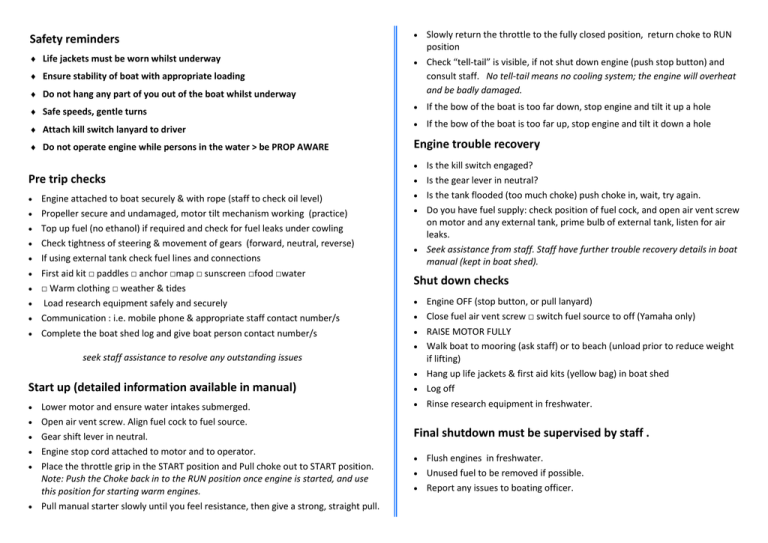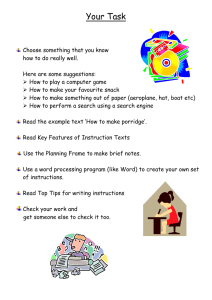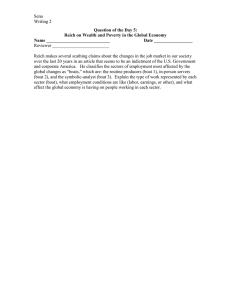Pre trip checks Start up (detailed information available in manual
advertisement

Safety reminders Life jackets must be worn whilst underway Ensure stability of boat with appropriate loading Do not hang any part of you out of the boat whilst underway Safe speeds, gentle turns Attach kill switch lanyard to driver Do not operate engine while persons in the water > be PROP AWARE Slowly return the throttle to the fully closed position, return choke to RUN position Check “tell-tail” is visible, if not shut down engine (push stop button) and consult staff. No tell-tail means no cooling system; the engine will overheat and be badly damaged. If the bow of the boat is too far down, stop engine and tilt it up a hole If the bow of the boat is too far up, stop engine and tilt it down a hole Engine trouble recovery Pre trip checks Engine attached to boat securely & with rope (staff to check oil level) Propeller secure and undamaged, motor tilt mechanism working (practice) Top up fuel (no ethanol) if required and check for fuel leaks under cowling Check tightness of steering & movement of gears (forward, neutral, reverse) If using external tank check fuel lines and connections First aid kit □ paddles □ anchor □map □ sunscreen □food □water □ Warm clothing □ weather & tides Load research equipment safely and securely Communication : i.e. mobile phone & appropriate staff contact number/s Complete the boat shed log and give boat person contact number/s Shut down checks seek staff assistance to resolve any outstanding issues Start up (detailed information available in manual) Lower motor and ensure water intakes submerged. Open air vent screw. Align fuel cock to fuel source. Gear shift lever in neutral. Engine stop cord attached to motor and to operator. Place the throttle grip in the START position and Pull choke out to START position. Note: Push the Choke back in to the RUN position once engine is started, and use this position for starting warm engines. Pull manual starter slowly until you feel resistance, then give a strong, straight pull. Is the kill switch engaged? Is the gear lever in neutral? Is the tank flooded (too much choke) push choke in, wait, try again. Do you have fuel supply: check position of fuel cock, and open air vent screw on motor and any external tank, prime bulb of external tank, listen for air leaks. Seek assistance from staff. Staff have further trouble recovery details in boat manual (kept in boat shed). Engine OFF (stop button, or pull lanyard) Close fuel air vent screw □ switch fuel source to off (Yamaha only) RAISE MOTOR FULLY Walk boat to mooring (ask staff) or to beach (unload prior to reduce weight if lifting) Hang up life jackets & first aid kits (yellow bag) in boat shed Log off Rinse research equipment in freshwater. Final shutdown must be supervised by staff . Flush engines in freshwater. Unused fuel to be removed if possible. Report any issues to boating officer. Location: Smiths Lake, NSW. UNSW research station via Horse Point Road. Main boat ramp: Smiths lake village. cnr Ansett Ave and Amaroo Drive Weather & tides: http://www.bom.gov.au/nsw/ forecasts/macquariecoast.shtml Local contact numbers: Police Buladelah Police Station (02) 4997 4204 [23 Meade Street, Bulahdelah] Fire FORSTER (02) 6554 6096 Hospital Bulahdelah Community Hospital (02) 4997 4477 [Richmond Street, Bulahdelah] UNSW Research Station Marine Rescue - Forster Tuncurry 02 6554 5458 or 0404 846 039 (closest) Marine Rescue - Port Stephens 02 4981 3585 or 0407 498 135 (back up) EMERGENCY Life threatening call 000 for ambulance/ fire /police Non-life threatening including breakdown: call staff mobile numbers (ensure you have these in your phone prior to departure). Report all incidents to staff who can then assist and report to UNSW Harm2Zero.


